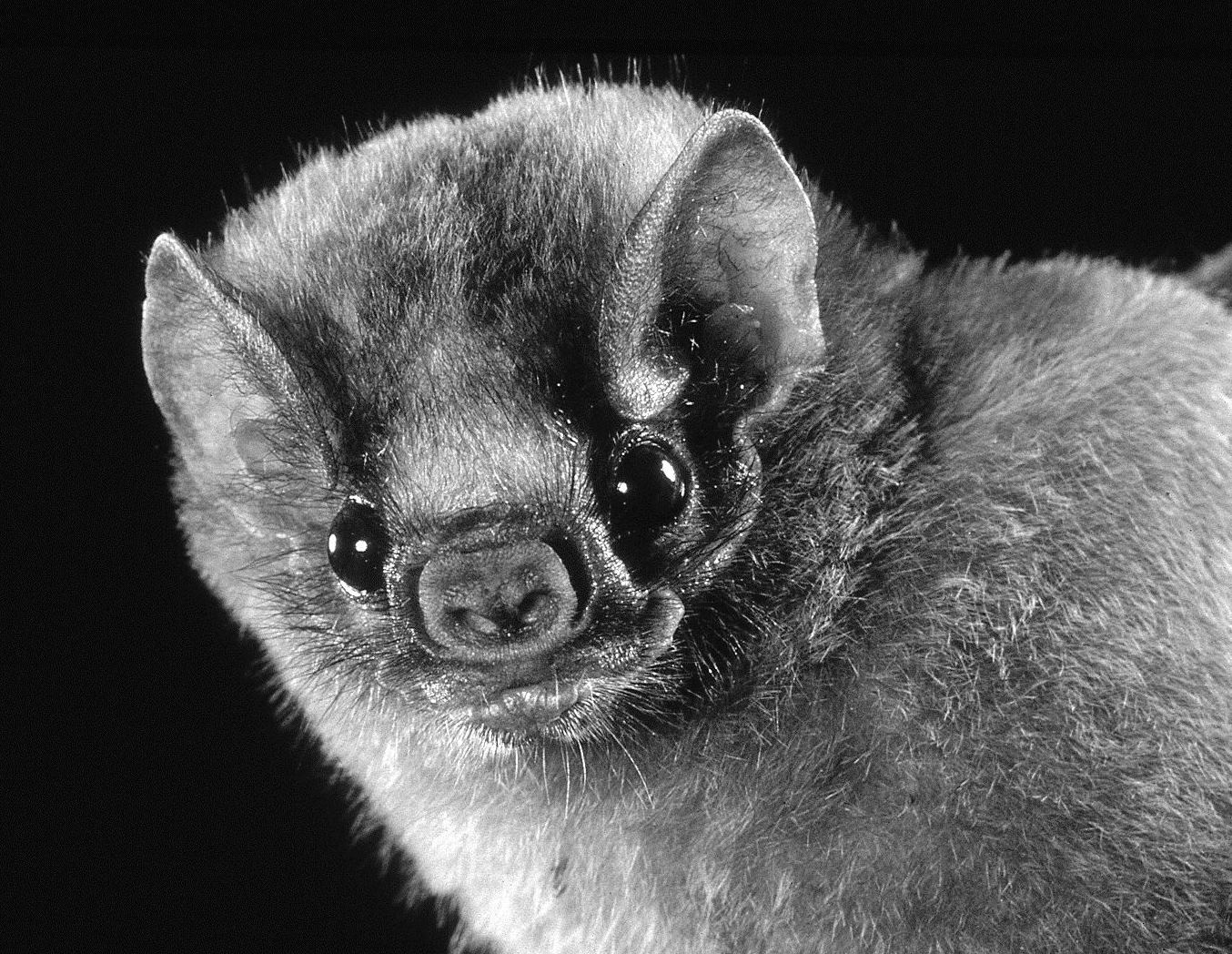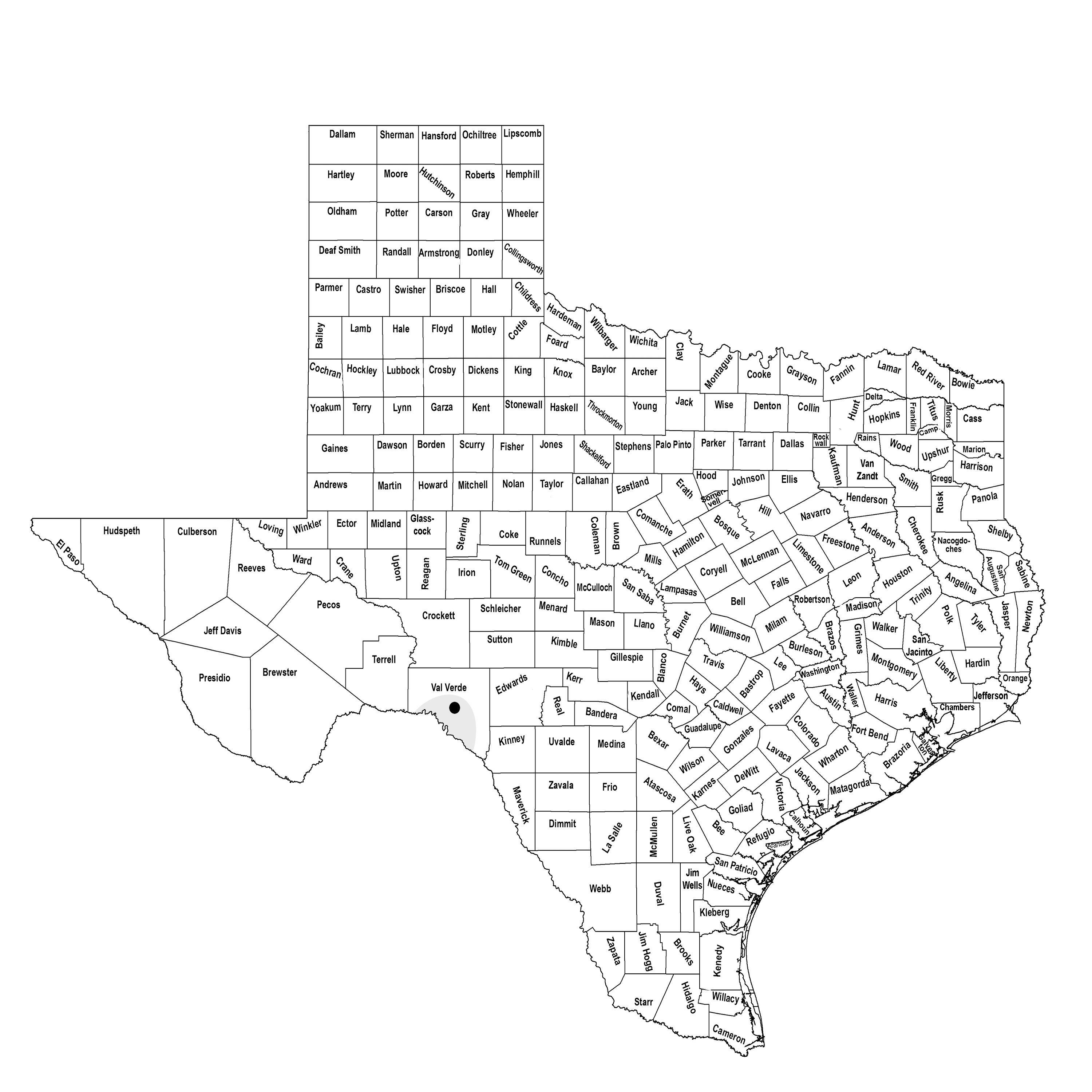HAIRY-LEGGED VAMPIRE BAT
Diphylla ecaudata Spix 1823
Order Chiroptera : Family Phyllostomidae
DESCRIPTION. A relatively large, sooty-brown bat with no tail; a narrow, hairy interfemoral membrane; short, rounded ears; and a short, pug-nosed snout. The dentition is highly modified, with the middle upper incisors larger than the canines; the outer incisors very small and set so close to the canines that they are easily overlooked; the crowns of the outer lower incisors seven lobed, fan shaped, and more than twice as wide as the inner lower incisors; premolars and molars very small and probably nonfunctional. Dental formula: I 2/2, C 1/1, Pm 1/2, M 2/2 × 2 = 26. Averages for external measurements: total length, 85 mm; foot, 13 mm; forearm, 53 mm. Weight, 30–40 g.

DISTRIBUTION. This species is known in Texas on the basis of one female taken 24 May 1967 from an abandoned railroad tunnel 19 km (12 mi.) west of Comstock, Val Verde County. This record extended the range of the hairy-legged vampire approximately 725 km (450 mi.) to the northwest of Tamaulipas, Mexico, where it is more frequently encountered. The species is native to Central and South American tropical forests.

SUBSPECIES. Monotypic species.
HABITS. This bat is primarily an inhabitant of tropical and subtropical forestlands. Its daytime retreat is normally a cave, which it may share with other species of bats, but it has also been found roosting in mine tunnels and hollow trees. In the Mexican state of San Luis Potosi, Walter Dalquest found that these vampire bats were more solitary than the common vampire bat (Desmodus rotundus), and they did not gather in groups, even when several individuals inhabited a cave. Consequently, pools of digested blood do not form, and there is only a slight odor of ammonia in the caves they inhabit. He found about 35 individuals, mostly females with young, in one cave, but usually only one to three were present in a given cave. These bats are shy, quick of movement, and readily take flight when molested.
The food of Diphylla ecaudata is the blood of warm-blooded vertebrates, mainly birds, including domestic chickens. Ernest Walker, author of several editions of The Mammals of the World, reported that Diphylla ecaudata attacks the legs and cloacal region of chickens. One bat was "observed alighting on the tail of a chicken, hanging by its hind legs and biting the exposed skin in the cloacal region, and then lapping up the blood while in an upright position."
This species seems to be reproductively active throughout the year. Pregnant females have been reported from Mexico and Central America in March, July, August, October, and November. The number of embryos per female is normally one, but one female captured on 8 July in Chiapas, Mexico, contained two nearly full-term (crown–rump length 34 mm) embryos. The reproductive condition of the female captured in Texas was not recorded.
Although only one specimen of the hairy-legged vampire bat is known from Texas, it is possible that a thorough search of the caves in the Hill Country and along the Rio Grande will reveal additional records of this species or the common vampire bat (Desmodus rotundus), which has been taken in northern Mexico no more than 200 km (124 mi.) from the Texas border. Since Diphylla ecaudata is a possible reservoir of bovine paralytic rabies, it is of economic importance to the cattle and sports industries of Texas.
POPULATION STATUS. Extralimital. Diphylla ecaudata is probably of accidental occurrence in Texas.
CONSERVATION STATUS. The hairy-legged vampire bat is listed as least concern by the IUCN as it is widespread, relatively tolerant to a range of habitats, and unlikely to be declining rapidly enough to qualify under a more threatened category. It does not appear on the federal or state lists of concerned species and should not be considered threatened at this time.
From The Mammals of Texas, Seventh Edition by David J. Schmidly and Robert D. Bradley, copyright © 1994, 2004, 2016. Courtesy of the University of Texas Press.
Natural Science Research Laboratory
-
Address
Museum of Texas Tech University, 3301 4th street, Lubbock, TX 79409 -
Phone
806.742.2486 -
Email
nsrl.museum@ttu.edu

